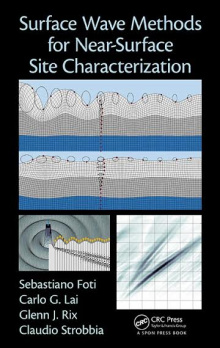Surface Wave Methods for Near-Surface Site Characterization
 Surface wave methods exploit the dispersive nature of surface wave propagation in heterogeneous media to measure shear wave velocity or material damping ratio profiles, and enable earthquake site response to be assessed.
Surface wave methods exploit the dispersive nature of surface wave propagation in heterogeneous media to measure shear wave velocity or material damping ratio profiles, and enable earthquake site response to be assessed.
This book is a comprehensive reference that provides a unified treatment of surface wave propagation, signal processing, inverse theory and the testing protocols that form the basis of modern surface wave methods. The use of these tests has increased dramatically since the 1980s, but they are too often performed and interpreted in a variety of ways that are confusing. This book answers the pressing need for a guide to the basic principles as well as outlining a set of reliable, dependable and accepted practices. It is written for geotechnical engineers, engineering seismologists and geophysicists as well as academics in these fields. It includes several case histories and a chapter on advanced applications.
Divided into eight chapters, the book explains surface wave testing principles from data measurement to interpretation. It effectively integrates several examples and case studies illustrating how different ground conditions and geological settings may influence the interpretation of data measurements. The authors accurately describe each phase of testing in addition to the guidelines for correctly performing and interpreting results. They present variants of the test within a consistent framework to facilitate comparisons, and include an in-depth discussion of the uncertainties arising at each stage of surface wave testing.
It is written for geotechnical engineers, engineering seismologists, geophysicists, and researchers.
